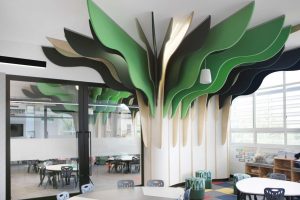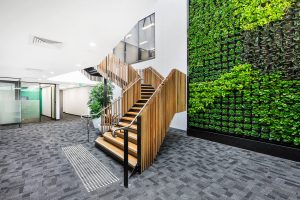What is an “elegant” design?
Mark Perry, Design Director
Have you ever seen one of those incredibly ornate watches, bestudded with jewels of every size and colour, but showing the wrong time? Perhaps it simply
stopped, it could have had something to do with a defect – who knows? The point being that many is the time that thousands have been spent on watches
that look fabulous in every conceivable way and yet… they just don’t work. Not into the longer term anyway.
Commercial interior design can be plagued by similar
problems if a holistic view of the wants, needs and function of the space is not properly considered. Just like that eye-catching timepiece that really
ought to be more fondly regarded or the six-figure sportscar that spends more time at the repairers than on the road, a beautiful and effective
fit out must always be more than the sum of its impressive parts. Otherwise it quickly becomes an eyesore and a costly reminder that elegance, true
elegance is not reflected solely in high sheen finishes. But let’s start at the start – with the watch.
What is elegance and what to watch for?
I wouldn’t call myself an expert on timepieces in the truest sense. I would say that I have an eye for detail that allows me to understand and therefore
enjoy the intricacies of a successful design. If you read my earlier piece on timeless design,
you will recall that the best designs manage to stay out of your way, say all that needs to be said about your brand (no more and no less) while helping
you do your best work. To help illustrate that point I like to reference three types of watches:
- The decorative watch – in many ways, these watches are designed to make an impression, almost immediately, and sometimes from a considerable
distance. Once the impression is made, quite often there’s little more to be said and perhaps even less to see. From the showpieces that keep the
left hand weighed down under layers of carats to the watches that take their place on the Mount Rushmore of watchmaking brands, the decorative
watch is supposed to describe the wearer but ultimately says too little and yet oftentimes, a little too much. - The utility watch – also appears in the form of divers’ watches, the pieces are recognised, almost singularly, for their practicality. Often
multifunctional, usually quite tough and resilient across a range of external environments, expect gadgetry, multiple faces and a robust strap.
Some call them “no-nonsense designs” others prefer practical and/or functional, rarely would they be described as beautiful and never elegant. - The Swiss watch – remarkable because by some of today’s standards it is stunningly unremarkable. Known for telling the time, it does just that
whilst achieving something very interesting. This simple timepiece with its modestly proportioned watchstrap draws the admirer in, compelling one
to notice the simplicity of design, while rewarding the keen observer with an insight into its intricacies. Stylish? Yes. Fashionable? Perhaps
not always. Timeless functionality with features that never look out of place? Definitely.
I have often said that as commercial interior designers, we are first and foremost problem-solvers. On the face of it, that could mean we must maximise
space, ensure the corporate logo appears prominently in the reception area and assign enough space to everybody and everything to perform its function.
But the watch precis poses another challenge that speaks to branding. To properly address it, we need to be comfortable with the essential elements
of elegance.
Three elements of elegance
“When you see it, you’ll know it.” That adage applies to a number of high value propositions. For ease of recognition, it seems appropriate to distil elegance,
in commercial interior design, down to its three simplest components:
- Striking but simple – Potentially the simplest and yet most ambiguous descriptor for elegance. It rolls off the tongue but it’s much harder
to put into words, let alone pictures, let alone design. Put simply, there’s a certain elegance that clings to a feature that almost immediately
draws the eye but has a more profound effect on its surroundings than on itself. Consider the “humble”, single-jewelled necklace – striking but
simple while enhances its surroundings. Those qualities can and should characterise a commercial environment fit out as and when the brand demands. - Looks like it belongs – Remaining in step with design flow is important. There’s a not-so-fine line between distracting and interesting. Elegant
features will both melt into the background and provide a point of focus for those that have an interest. To achieve this, the piece/element/focus
must look at home. And an elegant feature that looks at home in one office, may seem like an uninvited guest in another. Elegance is something
unique, not torn from a template, it’s something that enhances the experiences of the 5 senses rather than overwhelming them. Subtlety is the key,
consideration is the catalyst and a deft touch should always inform the application. - A clever variation on a common theme – There is nothing new under the sun and yet composers continue to create original music on the piano
which only has 88 keys and the guitar with its 6 strings. The notes and chords are often familiar but it’s how the creative manipulates them, infuses
them with emotion, cleverly takes the listener on a journey. As commercial interior designers, we are often working within pre-existing walls and
across surfaces that will remain in place. It’s what we create within these strictures to enhance the brand and the workspace that makes all the
difference.
The touches, additions and features that surreptitiously lift and transform a commercial space will not petulantly demand attention but they will draw
notice. Again, subtlety and creativity are the keys to unlocking elegant design and yes, you will know it when you see it.




